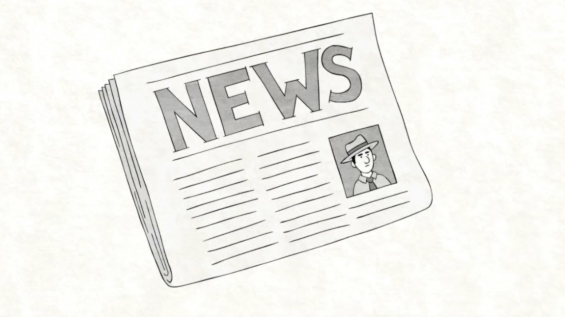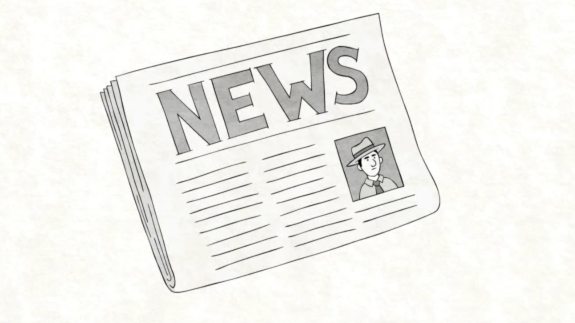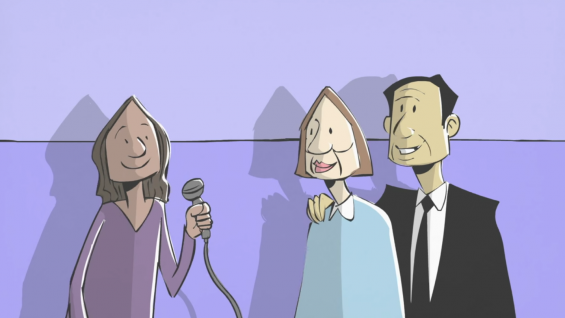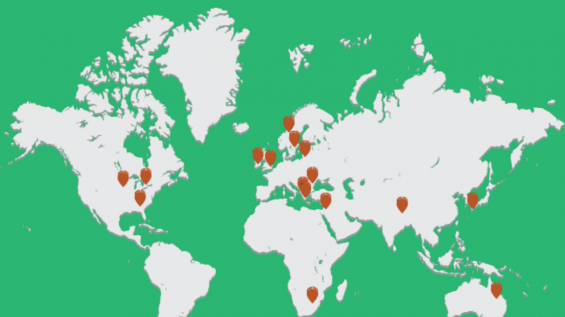
How to tell fake news from real news
In November 2016, Stanford University researchers made an alarming discovery: across the US, many students can’t tell the difference between a reported news article, a persuasive opinion piece, and a corporate ad. This lack of media literacy makes young people vulnerable to getting duped by “fake news” — which can have real consequences.
Want to strengthen your own ability to tell real news from fake news? Start by asking these five questions of any news item:
Who wrote it? Real news contains the real byline of a real journalist dedicated to the truth. Fake news (including “sponsored content” and traditional corporate ads) does not. Once you find the byline, look at the writer’s bio. This can help you identify whether the item you’re reading is a reported news article (written by a journalist with the intent to inform), a persuasive opinion piece (written by an industry expert with a point of view), or something else entirely.
What claims does it make? Real news — like these Pulitzer Prize winning articles — will include multiple primary sources when discussing a controversial claim. Fake news may include fake sources, false urls, and/or “alternative facts” that can be disproven through further research. When in doubt, dig deeper. Facts can be verified.
When was it published? Look at the publication date. If it’s breaking news, be extra careful. Use this tipsheet to decode breaking news.
Where was it published? Real news is published by trustworthy media outlets with a strong factchecking record, such as the BBC, NPR, ProPublica, Mother Jones, and Wired. (To learn more about any media outlet, look at their About page and examine their published body of work.) If you get your news primarily via social media, try to verify that the information is accurate before you share it. (On Twitter, for example, you might look for the blue “verified” checkmark next to a media outlet name to doublecheck a publication source before sharing a link.)
How does it make you feel? Fake news, like all propaganda, is designed to make you feel strong emotions. So if you read a news item that makes you feel super angry, pause and take a deep breath. Then, doublecheck the item’s claims by comparing it to the news on any three of the media outlets listed above — and decide for yourself if the item is real news or fake news. Bottom line: Don’t believe everything you read. There is no substitute for critical thinking.
If you get in the habit of asking all 5 of these questions whenever you read a news article, then your basic news literacy skills will start to grow stronger. However, these are just the basics! To dive deeper into news and media literacy, watch the TED-Ed Lesson: How to choose your news. To find out more about what students need, read the Stanford University report, published here.
Laura McClure is an award-winning journalist and the TED-Ed Editor. To learn something new every week, sign up here for the TED-Ed Newsletter.





Fantastic! Have been working on this in my high school science classes! The Stanford Study is a great resource and quite eye-opening! Great work Laura!
Fake news has an agenda. It is propaganda. Much of our main stream media and all cable are now owned by corporations who have a history of distracting the public and making the news into trivial entertainment. Many of them use spin doctors from the two major parties. It was painfully obvious this past election and did the country a great disservice.
Issues on fake news are prevalent in the Philippines nowadays, more often in social medias in which the youths are much involved and prone to reading hoaxes everywhere.
Helpful article – thank you! My only caveat might be that right now ‘real news’ stories found in ‘respectable’ media outlets about Trump’s versions of reality (eg crowd size at the inauguration) may also make us ‘super angry’ – so apply the previous tests first!
It seems to me an excellent work and a very good contribution to distinguish false information from the true ones, and the intentions of those news that, although true, have objectives that are not in sight. I am a journalist and an entrepreneur, I live in Venezuela and I believe that in Latin America the results of a study like that would be the same
I made some specific lesson plans to teach this! You can read about it here
Thank you for this great information and i helped me learn alot
After looking at a few of the articles on your site,
I truly appreciate your technique of blogging.
I saved it to my bookmark website list and will be checking back
in the near future. Please check out my web site as well
and let me know how you feel.
I’ve always wondered about this. Thank you!
“Check that there is a blue verified tick on twitter”. But who watches the watchmen? Twitter itself is a big corporation. What is its agenda? What is the agenda of the major media outlets (many of which are owned by that lovely man Rupert Murdoch).
It’s getting to the point where you can’t trust any news report. Fact checking… who checks the facts, and how?
The classic misleading article in modern mainstream media is the storm in a teacup manufactured by taking someone’s words out of context. Or focusing on some politically incorrect slip of the tongue instead of far more important issues.
I like it. It tells us the info we need to know what type a news we should have and what fake news is and on understanding the news better.
Very informative, now i am better able to identify fake news and how to set it aside from real news, I now understand why fake news seem to have captured more attention by unaware people all over the wold. ( design for said reason/s)
I’ve always wondered about this. I like it this post..
It’s pretty easy to identify. Look for a comments section, if don’t have one they’re typically spouting fake news. Real news wants feed back.